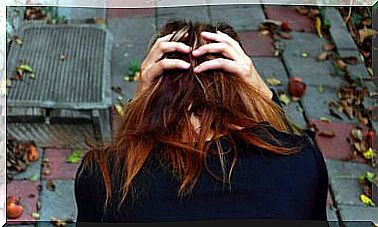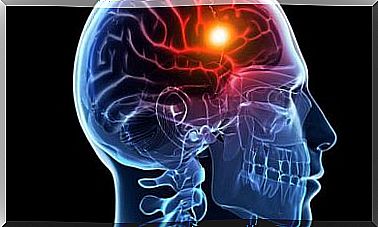Martin Seligman And His Interesting Theories

Martin Seligman is a renowned American psychologist and writer, born on August 12, 1924 in Albany, United States. He is a professor at the University of Pennsylvania, being one of the main references in the world of positive psychology. His theories of “learned helplessness” and “well-being” are iconic today.
Seligman has been characterized by having an outstanding career throughout his life. He was president of the American Psychiatric Association (APA) and editor of its famous Prevention and Treatment newsletter. All this has led to his consolidation as a psychologist and author of several books, which have catapulted him as an important theorist on the subject and a great researcher.
The studies carried out by Dr. Martin Seligman and his positive psychology are mainly focused on the approach to depression. It postulates that we are capable of using more intelligent strategies when hope beats in our eyes.
Many are the contributions that Martin Seligman has left us regarding depression caused by negative thoughts. His work follows the line of studies of Professor Aron T. Beck , who has also stood out for his contributions in treatments against depression. Likewise, in cognitive therapy related to problems of perception of reality and loss of control in the face of negative experiences.
At this point, it should be remembered that positive psychology dedicates a good part of its efforts to identifying those factors or variables that make certain people very resistant on the mental plane in the face of difficulty. One of these factors is precisely our inertia when it comes to thinking, to position ourselves in the face of problems in the imaginary plane that we build and in which we place them.
Good thoughts improve the quality of life
Martin Seligman has raised with his theories the possibility of increasing well-being and reducing depression in patients. Its postulates provide wonderful tools to solve problems and modify the perception of the world in those who are depressed. Likewise, the study of happiness has contributed to finding ways to strengthen virtues and abilities.

One of the central concepts in Martin Seligman’s work is that of “learned helplessness.” This is related to the absence of activity or lack of response to situations that threaten the subject, which becomes a source of depression for many people. It takes place when someone experiences a situation and simply lets the results happen, without acting in any way. This occurs in a framework where there are automatic negative thoughts, which prevent action.
Based on these reflections, in 2002 Martin Seligman created the theory of authentic happiness in people. Later, he carried out experimental studies that later became the theory of well-being and the Perma Model. These focus on how positive emotions and relationships, along with personal commitment, lead to goal achievement and emotional balance.
In an experimental way, the need to counteract negative thoughts in human beings was raised as an antidepressant mechanism, highlighting the emotions of happiness and optimism. In other words, in order not to fall into depression, the situations that happen to us must be rationalized or explained, positively and not negatively. This implies a perspective of enjoyment and hope.
Unlearn against learned helplessness
The management we do of our interpersonal relationships is directly associated with our mental health, in particular with self-esteem and the problem-solving strategies that we tend to use. In this sense, learned helplessness (lack of hope) prevents us from mobilizing our resources to try to get out of a complicated situation.
In other words, it makes us lower our arms and give up. A position that in many cases leads directly to depression. Thus, it is capable of influencing, and a lot, in our way of acting, thinking and feeling.
In many cases, anxiety and depression appear when we feel unable to find solutions to problems. The absence of initiative when facing a difficulty or the delegation of all responsibility are two of the correlates of this learned helplessness. Seligman affirms that this lack of self-efficacy (“I can do it”) coupled with a low locus of control (“getting it depends on me”) can be unlearned as a vital attitude.
Difficult situations at work, school or in the social or family sphere can generate in someone a feeling of helplessness, at the same time that they feel attacked or violated. When this happens, it is not enough to tell someone who is in such a situation what to do. More than that, it is making him see that he retains an ability to positively influence what happens.
Imagine, for example, an injured athlete. This athlete may need to go without running for a while to recover. You may not be able to use this common method to improve performance, but you can use others. For example, you can go to a physiotherapist to speed up recovery, work on strength in muscle chains that have not been affected by the injury, or take care of your diet so as not to gain weight.
An athlete, prey to learned helplessness, will feel that all he can do is let time pass until the injury heals. This attitude will not only frustrate you and erode your sense of control, but it will also mean that when you return after your injury, you will have to regain all the form you have lost.

Positive emotions and motivation to act in difficult situations
Martin Seligman’s approach is geared towards working with emotions in a positive way. It nourishes and highlights the good things in each human being. This, alone, helps a person’s confidence and self-esteem increase considerably.
The objective is to ensure that individuals are able to deploy their capacities in conflictive situations. It seeks to promote the positive resolution of difficulties and motivate effective actions in specific situations. Unlearn that behavior of letting things go or repressing them.

Finally, Seligman’s concept of well-being encompasses that of happiness and optimism. Both can be found through positive emotions, commitment to activities, positive relationships with the environment, personal purpose building, and achievement. This is what at the end of the day prevents someone from falling into depression and favors a pleasant life.









